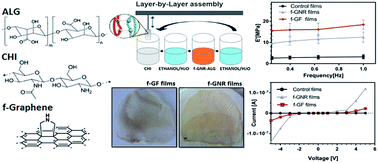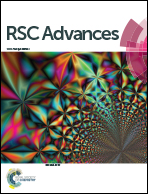Biomedical films of graphene nanoribbons and nanoflakes with natural polymers
Abstract
Graphene and its derivatives are promising as reinforcement for polymer nanocomposites. Additionally to their inherent outstanding mechanical properties, these nanoparticles may be functionalized to enhance their compatibility with the polymeric matrix and provide specific chemical and physical properties. In this work, new freestanding films (FS) based on chitosan (CHI), alginate (ALG) and functionalized graphene were developed using the layer-by-layer assembly. Suspensions of functionalized graphene nanoflakes (f-GF) and nanoribbons (f-GNR) were prepared from expanded graphite (EG) and multi-walled carbon nanotubes (MWNTs), respectively. The graphene nanoflakes and MWNTs were covalently functionalized using a 1,3-dipolar cycloaddition reaction that allowed the nanoparticles exfoliation. f-GNR and f-GF suspensions were characterized to demonstrate that graphene nanoflakes and MWNTs were successfully functionalized and exfoliated. Then, the layer-by-layer deposition of CHI, ALG and both types of functionalized graphene was investigated and FS films were produced. The morphology, thermal and mechanical characteristics of the produced FS films were assessed. Their degradation and swelling profiles as well as their biological behavior were evaluated. The incorporation of f-GF resulted in smoother films while the incorporation of f-GNR resulted in rougher films. When compared with the CHI/ALG bi-component films. Both graphene containing films remained hydrophobic. The graphene incorporation in the multilayered FS was estimated to be 1.7 wt% for f-GF and 2.5 wt% for f-GNR. The presence of functionalized graphene did not affect the thermal stability of the films, it increased the storage modulus and the dynamic mechanical response at 1 Hz and 37 °C, and decreased the electrical resistivity. The biological assays revealed cytocompatibility towards L929 cells when both f-GF and f-GNR were incorporated in the CHI/ALG matrix. In conclusion, these new f-GF and f-GNR reinforced FS films present great potential for use in biomedical applications such as films for wound healing or cardiac and bone engineering.



 Please wait while we load your content...
Please wait while we load your content...